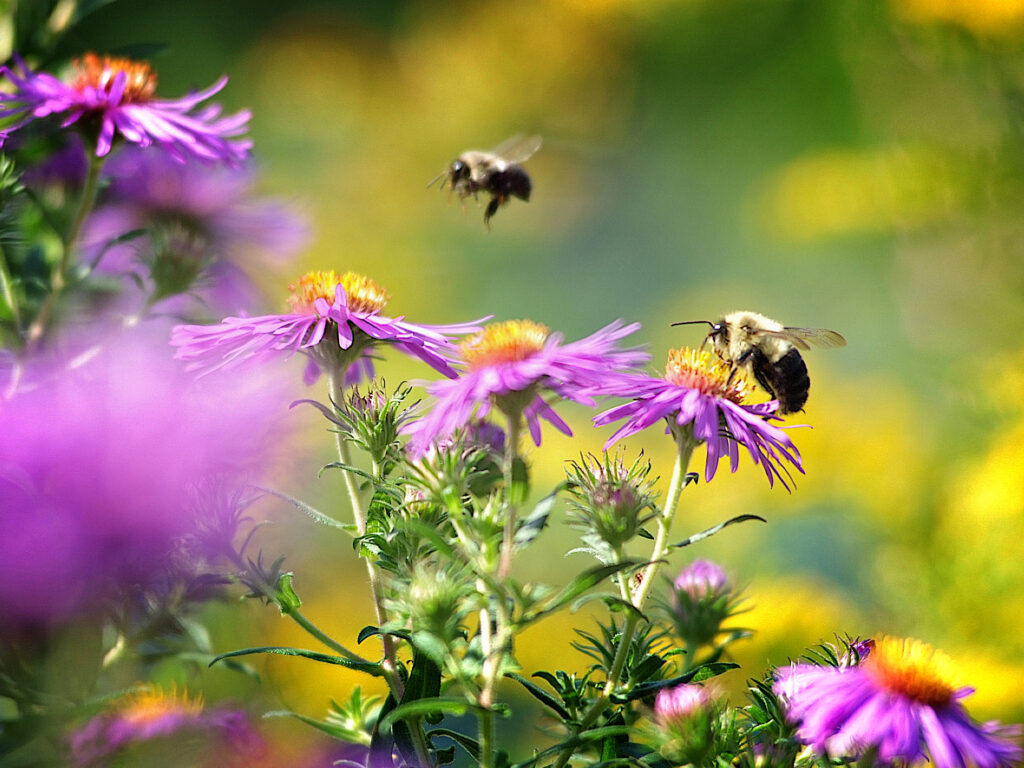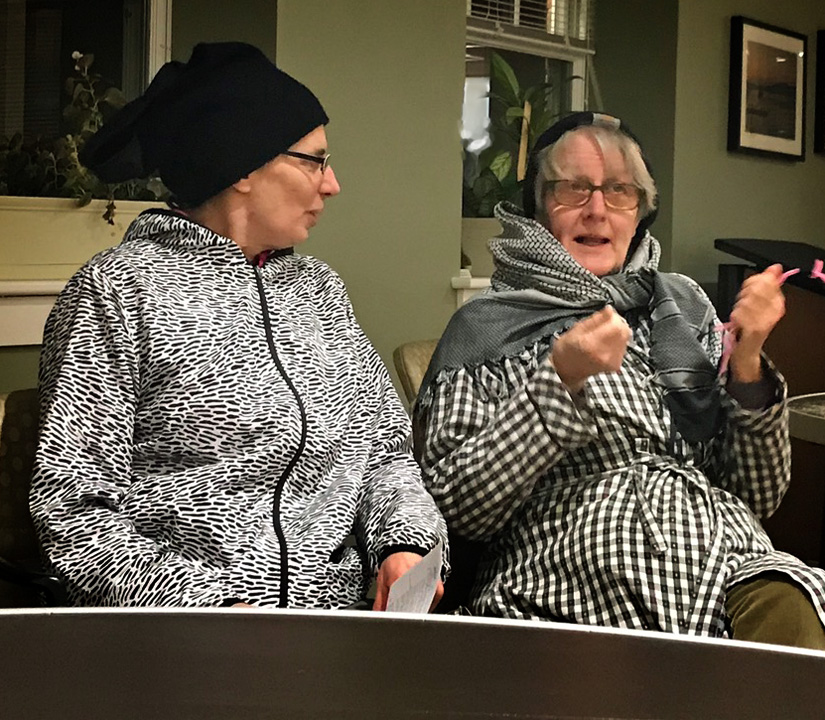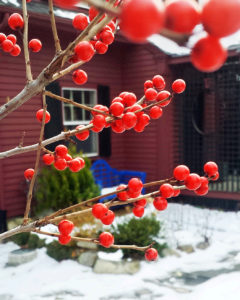Category Archives: New England
Powerful pollinator magnets – design with native perennials for fall bloom

Native asters and goldenrod attract native bees at Foxborough Conservation Commission’s Lane Learning Center
Plant Goldenrods and Asters to Support Pollinators in Late Summer
According to the National Wildlife Federation, native asters like New England (Aster novae-angliae), New York (Symphyotrichum novi-belgii), smooth (Aster laevis), white wood (Aster divaricatus) and other woodland asters support the entire life cycles of over 110 species of butterflies and moths, so it you want a pollinator garden, these are must-haves. And the good news is that it’s ragweed rather then goldenrod that causes so many allergies in late summer, so plant away!
Goldenrods such as zig-zag (Solidago flexicaulis), showy (Solidago speciosa), seaside (Solidago sempervirens), and anise-scented (Solidago odora) species are the top champions of supporting the entire life cycles of butterflies and moths in New England, supporting 110 species in eastern MA.
More good news is that there are asters and goldenrods that do well in shady and dry conditions, so don’t worry if you’ve not much sun – so get out there and help pollinators by planting the plants they depend upon for their very existence.
What plants are best for native bees?
Obviously they like goldenrods and asters as pictured above, but even better are native roses, like Carolina (Rosa caroliniana), Virginia (Rosa virginiana), swamp rose (Rosa palustris) and shining (Rosa nitida), plus flowering raspberry (Rubus odorous). As always, before purchasing plants, know your site’s cultural conditions – like sun/shade, soil texture and drainage – and select the best species for your conditions so your investment has the best chance of thriving.
Birds and other animals will thank you for providing habit – like food, shelter and nesting sites – that looks so satisfying to you!
Turn Your Lawn in Pollinator Gardens and Wildlife Habitat
Check out our progress on the turf-to-habitat project in Seekonk, MA, like it if you like it and subscribe it you want to know more about native plant design and consulting in SE MA.
GROW NATIVE MA ANNUAL PLANT SALE – JOIN ME JUNE 1st!
Help Massachusetts communities and wildlife thrive by joining me at the annual Grow Native Massachusetts Plant Sale. You’ll find over 2,000 plants covering 120 varieties, and I (and other experts) can help you make smart selections for the particular conditions of your planting area. Just look for me in a blue volunteer apron from 8-11. Shop early for best selection.
From 9-2:30 at the UMass Waltham Field Station at 240 Beaver Street, Waltham 02452, you may find:
- Perennials sorted by sun, shade and part-shade, and all types of soil conditions
- A large selection of evergreen and deciduous ferns
- Grasses and sedges, both cool and warm season
- Trees and shrubs at small sizes so you can take home in your car. Native trees and shrubs do the most to increase biodiversity and to enhance the wildlife value of your landscapes.
AND new for this year: sweet goldenrod (Solidago odora), bluestem goldenrod (Solidago caesia) and spotted beebalm (Monarda punctata)—custom grown just for this sale, as these are top native herbaceous plants for supporting the entire life cycles of our butterfly and moth pollinator friends, and a whole lot of bees’, too.
All plants are native to the eastern United States—the majority indigenous to New England
Learn more: https://www.grownativemass.org/programs/plantsale
Download a list of the species available at the 2019 Native Plant Sale
TWO CHICKADEES WALK INTO A BAR…IN A SHARON FOREST

Sharon Garden Club January 2019 program “Wanted Dead: Not Alive!” presenters Carol Lundeen, left, and Brenda Minihan take the role of a pair of black-capped chickadees in a skit that tells the tale of how the introduction of beautiful exotic invasive plants by early American landscape designers has had terribly destructive results for native wildlife and our local, regional, and national natural resources. Ellen Schoenfeld-Beeks, not pictured, played the role of landscape designer “Fredericka” Law Olmstead in introducing the exotic plants to our country. Photo courtesy Marcia Podlisny.
.
Native Winterberry Holly – A Feast for the Eyes and the Birds

Ilex verticillata, or wintererry holly, adds curb appeal and attracts many species of local and migratory birds. This multi-stem New England native shrub is planted in a garden designed as a screen along a driveway in Sharon, MA.
You can hardly beat winterberry holly, Ilex verticillata, for its winter show of bright red berries. The berries are coveted this time of year by migrating birds and holiday decorators, so why not have one of these hard-working native shrubs for your own personal supply of winter delight and support birds, too?
The one pictured here serves as a screen between driveways in Sharon, MA. The screen design includes a variety of shrubs and a tree with different bloom times and colors, deciduous and evergreen, including Carolina allspice (Calycanthus floridus), viburnum, lilac (Syringa vulgaris), and a juniper tree.
The winterberry prefers moist, acidic soil and full sun, but can do well in part shade and tolerate some dryness if the soil is rich organic matter. As with all hollies, there are male and female plants, so you’ll need one male nearby to get berries on the females. Most nurseries are good at labeling the sex properly. When in bloom, you can tell the sexes apart on your own by a close look at the flowers.
TOP 100 NATIVE PLANTS FOR NEW ENGLAND GARDENS
Congratulations to Mark Richardson and Dan Jaffe on publishing their extensive observations and close up photographs of their top 100 New England native plants. I’ve studied with them dozens of times while earning a certificate in native plant horticulture and design at the New England Wildflower Society’s Garden in the Woods in Framingham, MA and I think of them as native plant rock stars.
Mark is Botanic Garden Director, and Dan propagator and stock bed grower at Garden in the Woods.

